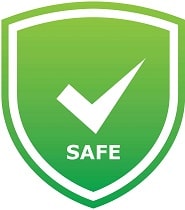Is gamma-(4-(beta-Hydroxyethyl)piperazin-1-yl)propyl-2-chlorophenothiazine Safe in Breastfeeding
Question
I am a breastfeeding mother and i want to know if it is safe to use gamma-(4-(beta-Hydroxyethyl)piperazin-1-yl)propyl-2-chlorophenothiazine? Is gamma-(4-(beta-Hydroxyethyl)piperazin-1-yl)propyl-2-chlorophenothiazine safe for nursing mother and child? Does gamma-(4-(beta-Hydroxyethyl)piperazin-1-yl)propyl-2-chlorophenothiazine extracts into breast milk? Does gamma-(4-(beta-Hydroxyethyl)piperazin-1-yl)propyl-2-chlorophenothiazine has any long term or short term side effects on infants? Can gamma-(4-(beta-Hydroxyethyl)piperazin-1-yl)propyl-2-chlorophenothiazine influence milk supply or can gamma-(4-(beta-Hydroxyethyl)piperazin-1-yl)propyl-2-chlorophenothiazine decrease milk supply in lactating mothers?
gamma-(4-(beta-Hydroxyethyl)piperazin-1-yl)propyl-2-chlorophenothiazine lactation summary

- DrLact safety Score for gamma-(4-(beta-Hydroxyethyl)piperazin-1-yl)propyl-2-chlorophenothiazine is 1 out of 8 which is considered Safe as per our analyses.
- A safety Score of 1 indicates that usage of gamma-(4-(beta-Hydroxyethyl)piperazin-1-yl)propyl-2-chlorophenothiazine is mostly safe during lactation for breastfed baby.
- Our study of different scientific research also indicates that gamma-(4-(beta-Hydroxyethyl)piperazin-1-yl)propyl-2-chlorophenothiazine does not cause any serious side effects in breastfeeding mothers.
- Most of scientific studies and research papers declaring usage of gamma-(4-(beta-Hydroxyethyl)piperazin-1-yl)propyl-2-chlorophenothiazine safe in breastfeeding are based on normal dosage and may not hold true for higher dosage.
- Score calculated using the DrLact safety Version 1.2 model, this score ranges from 0 to 8 and measures overall safety of drug in lactation. Scores are primarily calculated using publicly available case studies, research papers, other scientific journals and publically available data.
Answer by Dr. Ru: About gamma-(4-(beta-Hydroxyethyl)piperazin-1-yl)propyl-2-chlorophenothiazine usage in lactation
One reportedly case of use by a mother for 3,5 months (8 - 12 mg x 2 / daily) without harm effects on the child. Check-up for lethargy or dyskinetic symptoms.
Answer by DrLact: About gamma-(4-(beta-Hydroxyethyl)piperazin-1-yl)propyl-2-chlorophenothiazine usage in lactation
Limited information indicates that maternal doses of gamma-(4-(beta-Hydroxyethyl)piperazin-1-yl)propyl-2-chlorophenothiazine up to 24 mg daily produce low levels in milk. Very limited long-term follow-up data indicate no adverse developmental effects when other phenothiazines are used alone. Monitor the infant for excessive drowsiness during breastfeeding and for developmental milestones, especially if other antipsychotics are used concurrently.
gamma-(4-(beta-Hydroxyethyl)piperazin-1-yl)propyl-2-chlorophenothiazine Side Effects in Breastfeeding
One infant was breastfed from 1 month to 4.5 months of age during maternal intake of gamma-(4-(beta-Hydroxyethyl)piperazin-1-yl)propyl-2-chlorophenothiazine 16 mg daily. The infant grew normally and no adverse drug effects were seen.[1]
gamma-(4-(beta-Hydroxyethyl)piperazin-1-yl)propyl-2-chlorophenothiazine Possible Effects in Breastfeeding
Galactorrhea has been reported with gamma-(4-(beta-Hydroxyethyl)piperazin-1-yl)propyl-2-chlorophenothiazine.[2][3] Hyperprolactinemia appears to be the cause of the galactorrhea.[4][5][6] The hyperprolactinemia is caused by the drug's dopamine-blocking action in the tuberoinfundibular pathway.[7] The prolactin level in a mother with established lactation may not affect her ability to breastfeed.
Alternate Drugs
Quetiapine(Safe)
Flupenthixol(Safe)
Chlorpromazine(Low Risk)
Zuclopenthixol(Safe)
Aripiprazole(Low Risk)
Pimozide(Unsafe)
Asenapine(Low Risk)
Droperidol(Low Risk)
Perphenazine(Safe)
Paliperidone(Safe)
Olanzapine(Safe)
Sulpiride(Safe)
Ziprasidone(Unsafe)
Mesoridazine(Unsafe)
Trifluoperazine(Safe)
Loxapine(Unsafe)
Thiothixene(Unsafe)
Haloperidol(Safe)
Thioridazine(Unsafe)
Fluphenazine(Low Risk)
Clozapine(Low Risk)
Risperidone(Safe)
Promethazine(Low Risk)
Prochlorperazine(Unsafe)
Perphenazine(Safe)
Mesoridazine(Unsafe)
Trifluoperazine(Safe)
Thioridazine(Unsafe)
Fluphenazine(Low Risk)
Thiethylperazine(Unsafe)
Chlorpromazine(Low Risk)
